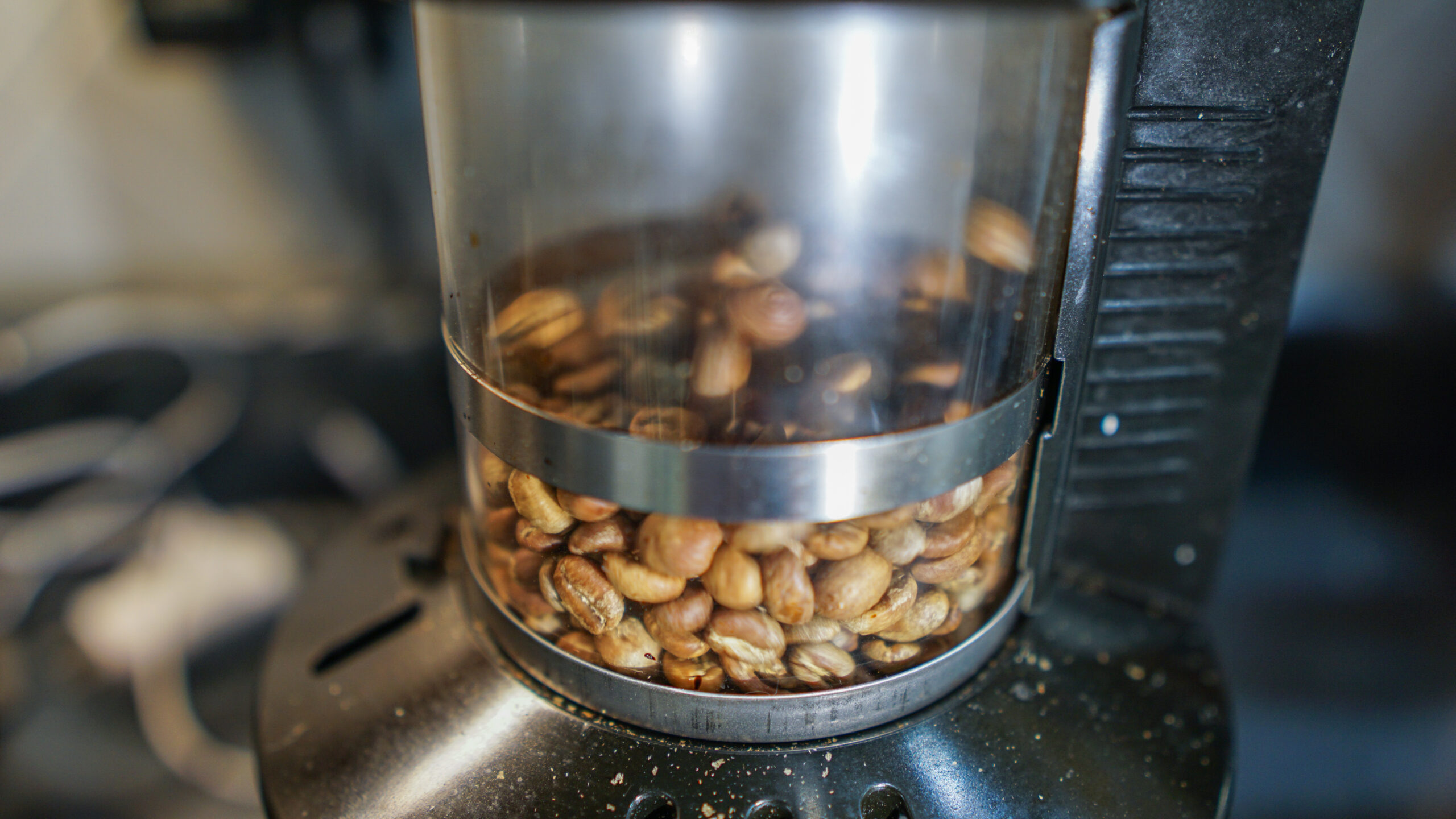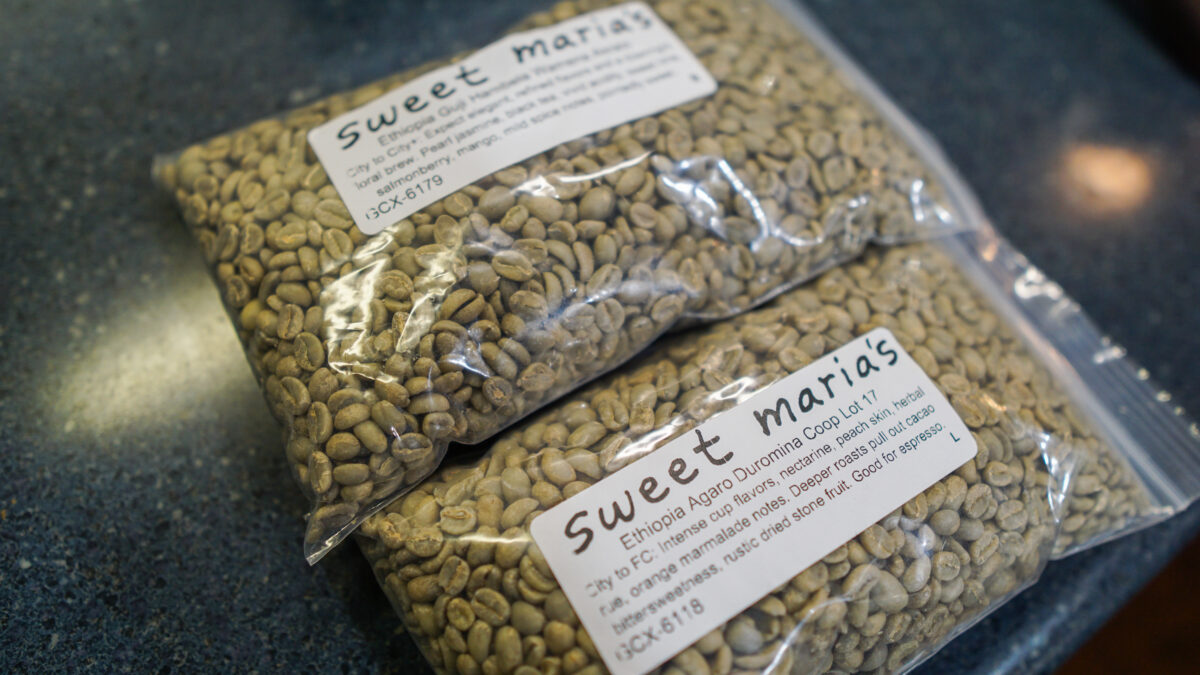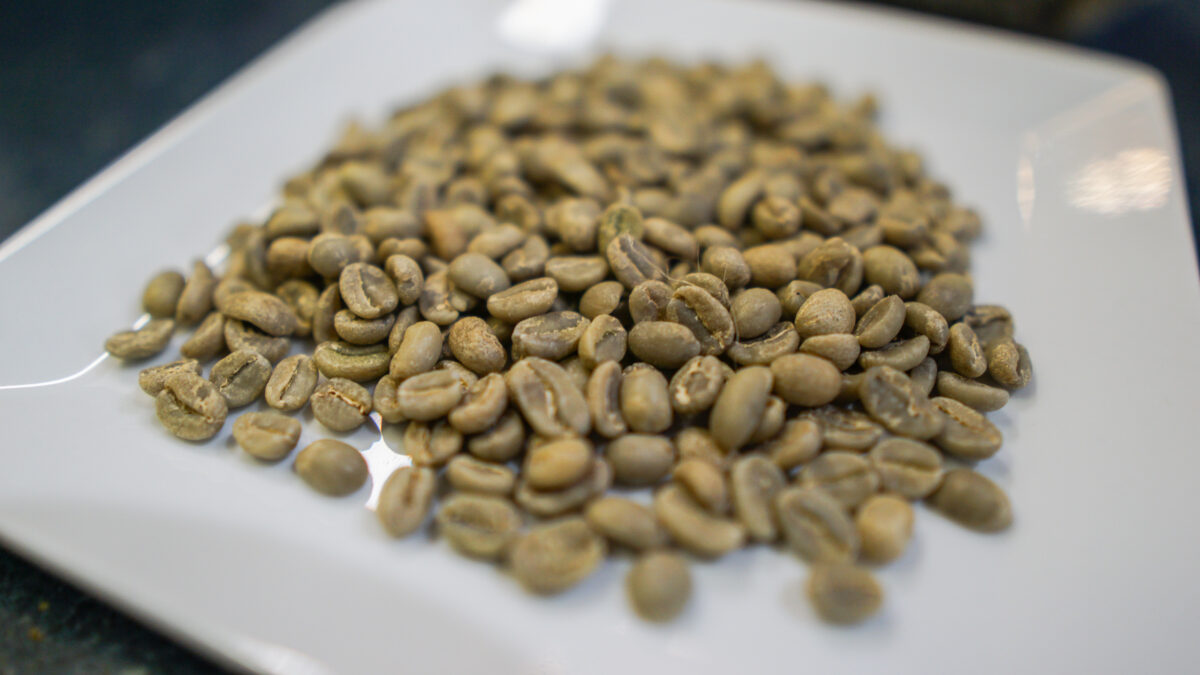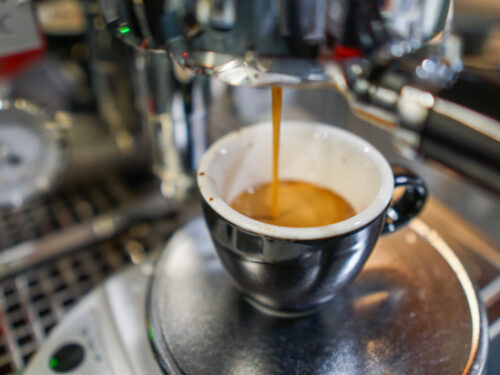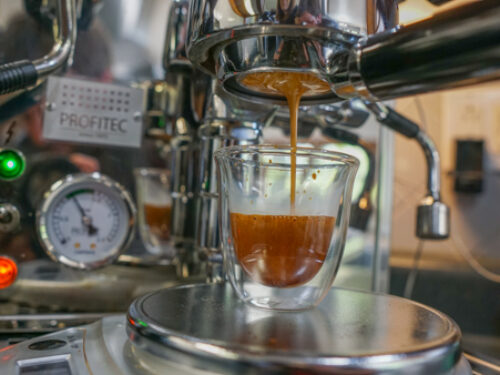Disclaimers: Our site uses demographic data, email opt-ins, display advertising, and affiliate links. Please check out our Terms and Conditions for more information.
We are coffee nerds. Big coffee nerds. The kind of coffee nerds that not only own every style of coffee brewing equipment under the sun but the kind that also got into home roasting as well.
As any coffee consumer can tell you, roasted beans are expensive, and those made by artisan producers are often doubly so.
So while we got into coffee roasting as a fun, albeit nerdy, hobby, we also did so because we thought it would end up saving money in the long run as green beans are often far, far cheaper.
Naturally, we wanted to share the math on if this purchase truly worked out in our favor or not!
What Kind of Coffee Roasters Are There?
When it comes to buying a coffee roaster, a wide range of products are available ranging from small, tabletop roasters, to fluidized beds/small scale drum roasters, and full-on commercial drum roasters for large volumes. These run the gamut of price but often are $75-$125, $250-$500, and $2,000+ respectively.
The two things to think about with coffee roasters that are the most important, to us at least, are the production volume and uniformity of roast.
On the budget side of the spectrum, cheap roasters may be able to go into larger volumes but typically just agitate beans over a heated plate (not unlike a crockpot with a rotating arm on the inside). Their ability to produce the most even of roasts may vary depending on the brand and how well it agitates the beans outright.
On the higher end of the spectrum, beans are agitated either using forced air or via a rotary drum, and some of these units may have added temperature control settings for even more precision overall. The downside to these units is that you often are trading off volume for this precision, which may not be for everyone. Cheaper units may be able to roast about one pound of beans, mid-range units may drop to as little as 100 grams, and higher-end units may get back to a pound (or significantly more) at a far greater cost.
While there are merits and cons to all of these systems, we're going to assume that you are either purchasing a budget roaster (~$100) or a mid-range roaster (~$250) for this analysis and let the commercial roasters stay with the professionals.
From there, you may want to develop a way to cool coffee beans, and we created a cooling system with a fan, tube, and mesh basket for about $50. Your mileage may vary on whether or not this is necessary, but it is best to cool coffee down as fast as possible to complete the roast, so you should have a small system in place for this as well.
- We devised our cooling system with these three products so the air would be channeled to the coffee basket via the tube, and the mesh basket would collect most (but not all) of the chaff when blown off. While we find this to be quite effective, there are likely better systems than this one.
The Cost of Beans Matters a Lot (Both Green and Pre-Roasted)
On the operating cost side of things, roasting coffee is a low-cost activity beyond the cost of beans (the only other appreciable items are electricity and time which we often ignore in these assessments).
Prices for green coffee beans can vary considerably from as low as $5/lb to $15/lb or more for rare and premium beans at retail prices (non-bulk orders). However, the vast majority of beans we purchase are roughly $8/lb at the time of publication, so we'll stick with that for this analysis.
Now, we cannot make a direct comparison of the cost of green beans to the cost of savings of roasted coffee because beans lose anywhere from 15-25% of their weight in the form of water loss during roasting. So to compare a 12-ounce bag of roasted coffee from an artisanal roaster, we should be starting with a 15-ounce bag of beans give or take an ounce in either direction.
As such, if you buy an $8/lb bag of green beans, the final effective price of a 12-ounce bag of roasted coffee will be approximately $7.50. If you are used to buying beans in a 16-ounce bag, the equivalent cost would be approximately $10. This would be the starting point for comparing savings against artisan and bulk producers respectively.
Finally, we need to compare these to the average cost of buying roasted beans from a 3rd party. Typically speaking, low-cost producers may be able to get a pound of roasted beans for $6-$10 whereas local, artisan producers may charge $16-$25 or more for a 12-ounce bag.
Very quickly you can see that if you drink low-cost coffee, you'll never be able to pay off a coffee roaster in perceived value- their beans are often far cheaper at the start. But if you drink coffee from local roasters, there is an opportunity.
So let's say you have a $250 roaster, a $50 cooling setup, and acquire your beans for $8/lb such that your cost to produce a 12-ounce bag of roasted beans is $7.50. Then lets say your typical bag costs $18 at your favorite local roaster, you go through an equivalent of one bag per week, and offset your consumption by home roasting 100%.
In this scenario, every bag you roast at home will save you about $10.50 and you would need approximately 28 roasts to pay off the difference. As such, at one bag per week, you will break even in approximately six to seven months! Drink coffee half as quickly? You're looking at 12-14 months. Go through coffee twice as fast? You're looking at just about three to four months for payback- not a bad return at all.
Have a cheaper roaster at around $100? The math works out even better at just 10 weeks at one bag a week, 20 weeks at one bag every other week, or five weeks at two bags a week!
But there is one final caveat worth discussing here- small batch roasters aren't the most user-friendly and if you're like us you're probably not going to use yours to offset 100% of your consumption.
We Don't Use Our Roaster 100% of the Time
We'll be the first to admit that our small batch roaster does not offset 100% of our coffee consumption. At 100-150 grams per batch in our Fresh Roast, each roast may only net us 80-120 grams of roasted coffee- equivalent to about 3-4 ounces (or 1/4 to 1/3 of a conventional bag). This means that we typically have to roast three to four batches to have the equivalent of one bag from a coffee shop.
This is time-consuming and ensures we do not use our machine as regularly as we would with a cheaper, more volume-friendly roaster (ignoring quality concerns aside, of course). As such, we should look at this one from a frequency of use angle as well.
Whenever we roast, we typically produce the equivalent of roughly one 12-ounce bag via multiple batches. Based on the above analysis, this is a savings of $10.50 from buying over the store. If we did this every week, paying off the $300 in equipment would take just about 28 weeks- or the six to seven-month figure quoted above.
But if you only roast 50% of the time, and buy that $18 bag at your local shop the other 50% of the time, that payback period jumps to about 57 weeks (or just over one year). Or if you roast just 25% of the time, buying beans the rest of the time, it jumps to about 26 months (or just over two years). Or, if you're a passive user and only roast 10% of the time, you may not break even for five to six years!
So while we probably are somewhere in the 20% range for offsetting our coffee consumption, with a payback of roughly 2.7 years, you can see how roasting at home becomes a frequency problem more than anything. At a savings of approximately $10.50 per 12-ounce bag, you ultimately need to produce ~28.5 bags to offset the cost of a ~$300 roasting setup outright.
For different roaster costs, you are likely looking at something like the following:
- $150 roasting system: ~14 twelve-ounce bags of roasted coffee
- $300 roasting system: ~29 twelve-ounce bags of roasted coffee
- $1,000 roasting system: ~95 twelve-ounce bags of roasted coffee
- $3,000 roasting system: ~285 twelve-ounce bags of roasted coffee
So depending on how often you think you'd roast at home and the capacity of your ideal coffee roaster, you can use the above numbers as a rough estimate to determine how long a machine may take to pay itself back in the long run. That balance really could be the difference between a coffee roaster becoming a novelty that collects dust in your basement and one that offsets your spending in a hurry.
But even for extreme coffee nerds like us, our mid-range unit is only just starting to pay itself off now that we've had it for about three years. So take that as you will!
Do you have a home coffee roaster? How often do you use it? Comment below to share!

